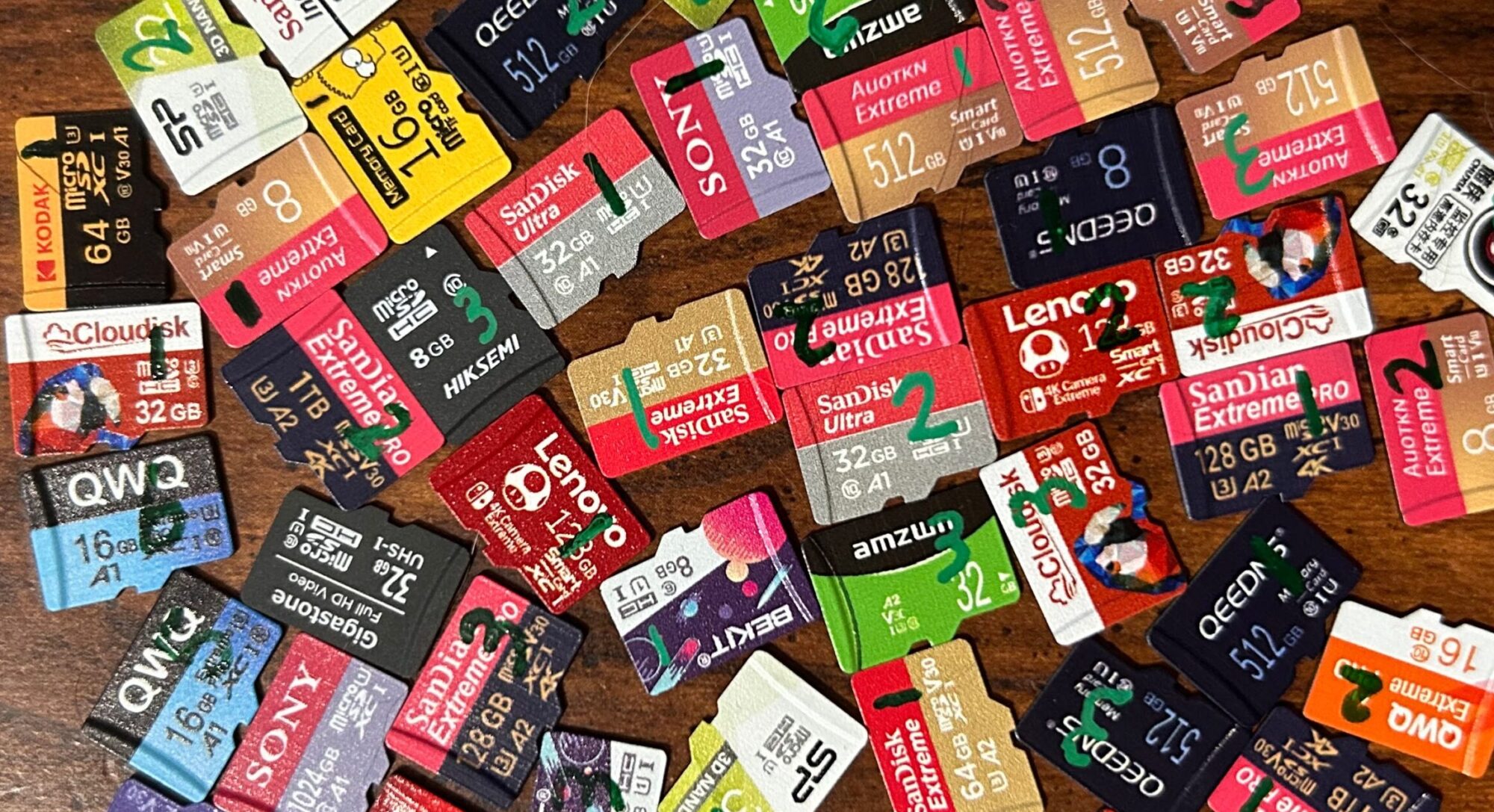I don’t remember exactly how I came across ATP as a brand name — I think it may have been while searching for microSD cards on Digikey. Unfortunately, even the cheapest of ATP’s cards would have been out of my budget. I eventually landed on some being sold on AliExpress. Funnily enough, I had to order them twice: the first time, the package made it partway into the US before USPS decided that it didn’t have enough postage and that it wasn’t going to be delivered. (I didn’t even get a “postage due” notice — I found out about it by pulling up the tracking info on USPS’s website.) Fortunately, AliExpress refunded it and I was able to reorder it. (And when I went to reorder it, I discovered that it was cheaper to order a 5-pack instead of three individual cards.)
These cards were packaged in a simple plastic case. As you can see from the picture, this wasn’t even a microSD card case — it was just a simple plastic box, and the cards were allowed to float around inside. Although it’s not unusual for such cards to be sold without retail packaging — they’re being sold to industrial customers, so the packaging would just be unnecessary waste — the fact that they weren’t packaged in a case suitable for microSD cards just seems a little…lazy.
I’m not 100% convinced that these are genuine ATP cards, but at the same time, I’m not 100% convinced that they’re knock-offs. I reached out to ATP to ask if they could authenticate the cards, but never heard back from them.
Performance metrics on these cards were pretty atrocious, with all performance metrics falling in the bottom 21% of all cards (as of this writing). This would be consistent with what I’ve seen from other knock-off cards; but then again, knock-off sellers don’t usually bother trying to make the CID information look authentic. If it is authentic, it’s old — the CID data gave manufacturing dates that were in 2011 and 2012 (and I purchased them in 2024). It could be that these are used cards that are being resold — which would explain why I was able to get them for so cheap. Unfortunately, SD cards don’t expose SMART data (like hard drives/SSDs do) — so I’ll never know if that’s the case.
On the endurance front, however, things have been looking pretty good:
- Sample #1’s first error was a string of two write failures — one 512 sectors long, the other 1,536 sectors long — during round 3,624. It has survived 37,654 read/write cycles in total so far.
- Sample #2 has survived 33,342 read/write cycles so far and has not yet experienced any errors.
- Sample #3 has survived 27,595 read/write cycles so far and has not yet experienced any errors.
- Sample #4’s first error was a single bit flip, in a single sector, during round 2,248. It has survived 28,287 read/write cycles in total so far.
- Sample #5’s first error was a write failure, affecting 2,816 contiguous sectors, during round 74. It has survived 10,297 read/write cycles in total so far.
June 11, 2025 (current number of read/write cycles updates automatically every hour)
